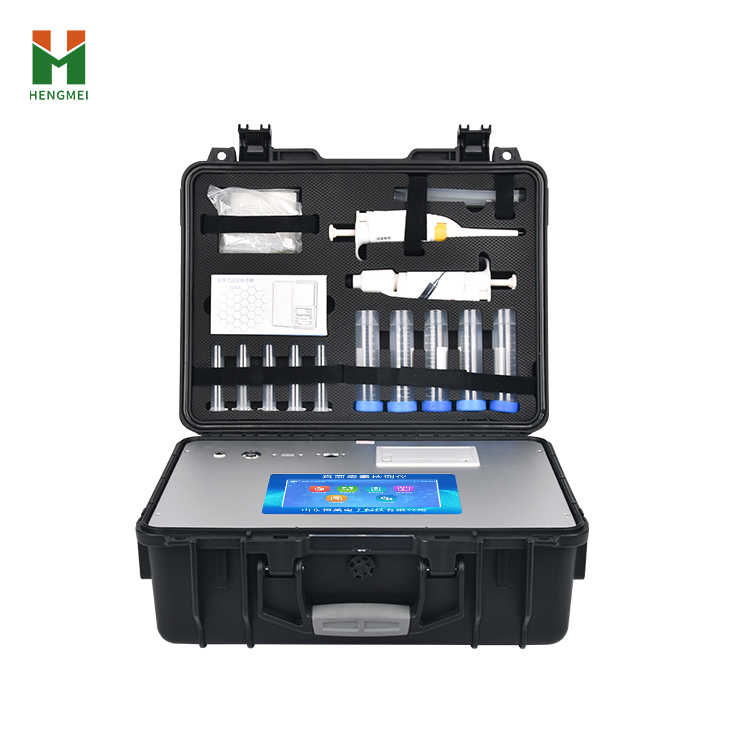In the field of food safety, the threat of mycotoxins is like a lurking "invisible killer," constantly affecting food quality and safety, posing numerous risks to human health and socioeconomic development. As a specialized device designed to address this threat, the mycotoxin detector plays an irreplaceable role in ensuring food safety.

Importance of Mycotoxin Detectors
Mycotoxins are secondary metabolites produced by fungi during their growth and reproduction. They are highly toxic, including aflatoxins, vomitoxins, ochratoxins, etc. Once ingested, they can cause severe damage to the liver, kidneys, nervous system, and even induce cancer. Mycotoxin contamination can occur at any stage of food production, processing, storage, and distribution.
If contaminated food is not detected in time, it may enter the market and be consumed, leading to large-scale food safety incidents. This not only harms consumers' health but also deals a devastating blow to the reputation and economic benefits of food enterprises, affecting the healthy development of the entire food industry. The mycotoxin detector can quickly and accurately measure the mycotoxin content in food, providing an effective quality control tool for food enterprises and strong technical support for regulatory agencies. This helps prevent mycotoxin-contaminated food from entering the market and ensures public dietary safety.
Technical Advantages of Mycotoxin Detectors
1. Integrated Portable Design: The instrument adopts an integrated portable rapid detection device. The chassis is made of industrial-grade ABS engineering plastic, which offers excellent pressure and drop resistance. It is not only easy to carry, meeting the needs of on-site and mobile testing, but also sturdy and durable, maintaining stable performance in various environments.
2. Intelligent and Efficient Operating System: Equipped with an Android smart operating system, the device is more efficient and user-friendly, allowing users to quickly master its operation. The multi-core processor ensures fast operation and stable performance even when processing large amounts of detection data, improving detection efficiency.
3. Intuitive and Accurate Detection Results: The device can automatically determine whether a sample is qualified, making the results more intuitive without requiring complex data analysis by professionals. It supports continuous testing of multiple samples, enabling cyclic detection and immediate testing, significantly enhancing detection continuity .
4. Powerful Database Management: The instrument features a built-in powerful database with a multi-category sample name menu library, allowing for sample classification management. Users can flexibly select detection samples, indicators, units, etc., and edit or add sample names, detection indicators, and submitting units as needed. Names can be added or deleted and saved into the sample database, facilitating data management and traceability.
5. Convenient Data Transmission Function: Equipped with Wi-Fi connectivity and 4G signal GPRS remote transmission, the device can achieve data remote transmission by inserting a SIM card. It quickly uploads detection data to computers and server regulatory platforms, enabling efficient data management and statistics, and realizing real-time sharing and efficient management of detection data.
6. Highly Intelligent Self-Check: The device is highly intelligent with self-check functions, including startup self-check and zero-adjustment, ensuring it is in normal working condition every time it is used. It also features automatic detection repeatability, guaranteeing the accuracy and reliability of detection results.
7. Fast Report Printing: Equipped with a new-generation high-speed thermal printer, the device can automatically print detection reports and QR codes after testing. The report includes key information such as the tested substance, pass/fail status, testing unit, inspected unit, inspector, and detection time, providing a clear and complete record of the results.
8. Detection Project Management: The device can perform all detection projects under the same software and display the results intuitively through the same window, facilitating unified management and viewing of different detection projects.
Industry Challenges and Solutions for Mycotoxin Detectors
1. High Detection Costs: Mycotoxin detection requires professional equipment and reagents, which can be a significant burden for small enterprises or testing institutions. To address this, some manufacturers reduce production costs by optimizing production processes and mass production, while also offering cost-effective reagent packages to alleviate users' financial pressure.
2. High Professional Requirements for Operators: Although the instrument is user-friendly, accurately understanding detection principles and mastering operational skills still require operators to possess certain professional knowledge. To tackle this, manufacturers provide professional operation training, including theoretical explanations and practical guidance, ensuring users can operate the instrument correctly.
3. Accuracy Affected by Multiple Factors: The accuracy of detection results can be influenced by sample pretreatment methods, temperature, humidity, and other environmental factors. To solve this, the instrument is designed to consider environmental impacts, with certain anti-interference capabilities. Meanwhile, manufacturers provide detailed operation manuals to guide users in standardized sample pretreatment and detection operations, reducing the impact of external factors on detection results.
In conclusion, with its significant role, scientific principles, and outstanding technical advantages, the mycotoxin detector has been widely applied in various fields, providing effective solutions to mycotoxin-related issues in food safety. As technology continues to develop, mycotoxin detectors will continue to improve, making greater contributions to ensuring food safety.
Address of this article:http://www.hmfoodtesting.com/article/158.html


 Current
location:
Current
location:





